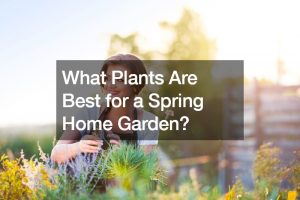Sustainability, in the simplest terms, means being to support your living conditions while still using resources conservatively. The Earth’s resources are finite, and it is important to make conscious efforts to preserve them for future generations.
Another concept of sustainability for households is being able to thrive and survive with minimal need to buy their needs from stores. With the habit of being sustainable also comes the habit of being eco-conscious. The lockdowns that came with the pandemic made the need for sustainability extremely clear. If worse comes to worst, households must be sustainable enough to support their most pressing needs, without or with minimal need to go to the nearest supermarket.
There are many ways to make your home more sustainable. Some invest in solar power systems so that they can generate their own electricity. Some invest in sustainable and energy-saving windows and doors to reduce their energy wastage. However, one way to be sustainable is to grow your own food and manage your wastes.
Grow a vegetable garden
Aside from investing in ornamental plants such as succulents, you must make time for a vegetable garden. A vegetable garden is one of the easiest ways to grow and produce your food. It allows you to ensure that you only eat organic and chemical-free fruits and vegetables. You also control when you will harvest your food and bring them to your table. You can let your vegetables ripen before you pick them up, allowing them to pack on those nutrients that your body needs.
When starting your vegetable garden, pick a spot in your yard that is exposed to sunlight for at least six hours. You can use a raised garden bed, so you can ensure the quality of your soil. Here are some vegetables that are easy to grow and are recommended for beginners.
- Lettuce — If you love making your salads, lettuce is a must in your garden. You can find lettuce seeds even in groceries, and they are inexpensive. You can directly sow them in your garden bed. What makes lettuce so enjoyable to grow is that they can survive the cold weather. Just cover them with a plastic sheet if there is snow, and they will survive.
- Spinach — Another home garden favorite, you can sow your spinach directly on your garden bed. You can plant it all year-round, and like lettuce, they are also resistant to the cold weather. Just make sure to plant it in well-draining soil.
- Cucumber -If you love dill pickles, then cucumbers should be in your garden. You can also put them in your salads. The best thing about cucumbers is that you can plant them on the ground or in a pot. Cucumbers are vines and if you will let them grow on a trellis, you will have lots of cucumbers to harvest.
- Tomatoes — Tomatoes are recommended to be planted indoors for 6 weeks first before you put them outdoors. Tomatoes love sunlight but hate the cold. They also will thrive with compost, fertilizer, and regular watering.
There are other vegetables that you can plant when you start your own vegetable garden. If you do not have a yard, you can plant them in well-draining pots. Just ensure to take them out to see some sun every day.
Compost your wastes

Now that you have started your vegetable garden, it’s the perfect time to try your hand on composting. Composting converts your food scraps and yard wastes into organic materials that you can add to your garden soil. Compost reduces the need for fertilizers and nourishes the soil, making your vegetables healthier as well. It also lowers your carbon footprint because these wastes would have contributed to the landfill’s methane emissions. Through composting, you are reducing the wastes that you are sending to landfills.
You can compost your wastes from fruits, vegetables, eggshells, coffee grounds, shredded newspapers, paper, grass clippings, leaves, hair, and sawdust among many others. They are categorized into a compost’s three ingredients:
- Browns — These include your dried leaves, twigs, and branches.
- Greens — These include grass clipping and your food wastes.
- Water — The right amount of water is needed for your compost.
You can compost in your home by choosing a dry and shaded spot in your yard. Choose a spot that is near a water source. Before you add your browns and greens, make sure that they are shredded or chopped. Moisten your compost materials as you add them to your compost. Put your fruits and vegetables beneath other compost materials. You can cover your compost to keep them moist. Once it becomes dark, you can now use them in your garden.
If you do not have a yard, you can also compost your wastes indoors. Use a special type of bin specifically designed for composting. However, you have to ensure that you keep away pests from your compost pile and that they will not give off a bad smell. You can use your compost at least two weeks after.
By choosing to grow your food and taking charge of your wastes, you are not only making your household more sustainable, but you are also helping nature. Growing your food is also safer and healthier than buying them in your supermarket and groceries.




